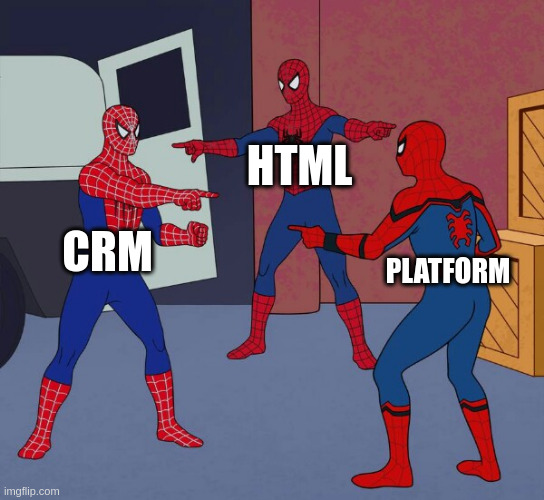Why I Built The Same Startup 3 Times
By Sam Reynoso
I spend months every year building the same product. It's year 3. Will I finally launch?
Preface
I'm Sam. No need for a long intro. This is the story of the three times I built the same startup. The first time, it was a project. The second, a product. The third — hopefully — a business.
If you're building something yourself, I think this will resonate. And while I understand your skepticism — “You built the same thing three times?” — I invite you to hear me out. There’s something here.
The Problem Changed
I build things to solve problems. Interesting ones, usually. The first version was a customer relationship management system (CRM) for a single user: a sports tournament director. One person managing many teams.
Let’s pause for a second. Alarm bells should be ringing.
A CRM is not a clear user pain — it’s all the pain. It can mean anything. And trust me: over the past three years, I've spent a collective six high-energy months thinking through and building every feature that could possibly matter in this space.
I built an Elixir-style supervisor in Python. I didn’t use Elixir. I just liked the idea. So I hacked together my own poor man’s version for a video transcoding system. Oh — did I mention the streaming service? Yeah, that kicked off iteration two. It had live chat, a scoreboard, and a score graph that updated as you scrubbed through the timeline.
It was sick.
Skill Issues
If the last section didn’t tie neatly to a theme — it’s too late to fix it now, I fear.
During iteration one, I realized I needed a spreadsheet-like application or a calendar applet. I couldn’t find anything open source, and that drove me nuts because I wasn’t about to pay $50 for a prototype.
This is the first tip of the article. This is the only tip. Don’t let that slow you down. I didn’t want to spend the money — even through it blocked me from designing a key part of the system.
During iteration two, I again reached the point where I needed a spreadsheet. It started to became a pattern: start thinking through a solution's tradeoffs, only to realize I’d been here before. Now during iteration three, it’s almost painful to second-guess myself. I've Clockwork Orange'd myself to over-engineering.
When I reached the moment in iteration two where I thought, "You know what this needs? A spreadsheet-like application!" — I didn’t hesitate. I just built it. Then I rebuilt it to work collaboratively. Getting "eventual consistency" with "optimistic updates" was easy after implementing undo/redo. It was the logical next step.
Don’t do that. If your product needs a feature you don’t have the skills to build yet — just build it anyway, or remove the feature, or pay for it. Whichever solution you choose, choose it quickly and move on.
5,000 IQ Solution
I grug-brained it. I’m building a simple marketplace app.
The users are business owners. They don’t want a CRM. They don’t care about dashboards, or video overlays. They want one thing: more signups. That’s the only pain that matters to them, and it’s one they’ll actually pay to fix. So I built a tool that solves that. Directly. Just: you run events, here’s how you get more people to show up.
I think I'm pretty good at picking the right problem, and defining the "must have" features. But just because something is a good idea doesn't mean it's the right idea for the time. I got into programming to help people. But I also want to build something sick. You can do both. Just know which one you’re doing at any givin the time.
The Pain of Iteration
Iteration is good, but it's not supposed to be exhaustive. For people who love programming, it's about problem solving. It’s hard to get into flow — where you see the Matrix and think three steps ahead — when you’re building the same thing, with the same tech stack, and the same features.
During iteration three, I moved deliberately slow. I basically didn’t need to rework anything along the way, and my net output was about the same as when I’m in the zone. But programming isn’t supposed to be an exercise in rote memory.
If you find yourself in that spot, stay close to your center, build what matters, and stay thirsty.
